
“Lincoln’s images remind us that America once boasted-and cherished-heroes.” – Harold Holzer
The collection of noted Abraham Lincoln scholar Harold Holzer explores America’s fascination with depictions of the 16th president. Highlighting the breadth of representations of Lincoln, and coming to auction September 27, The Harold Holzer Collection of Lincolniana serves as a culmination of his extensive research into the Lincoln image.
Notable lots include an 1860 painting of the president, still beardless, by John C. Wolfe; a fourth edition of the scarce “Wigwam Print,” produced for the May 1860 Republican Convention in Chicago; a 1907 bronze relief plaque by Victor D. Brenner, which became the model for the penny; and an autographed commission signed by Lincoln for his personal secretary William O. Stoddard in July 1961.
Below, we share Holzer’s introduction to the catalogue for his collection, and a few featured pieces.
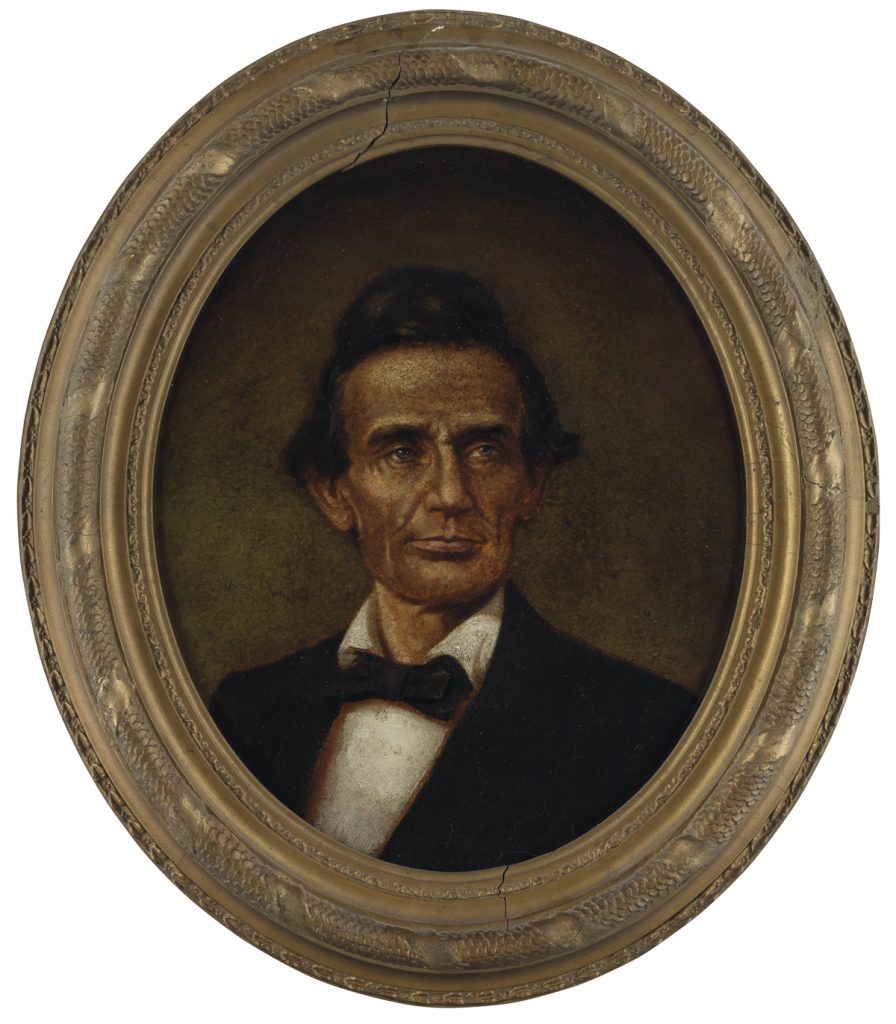
Lot 44: John C. Wolfe, Portrait of the beardless Lincoln as he appeared in June 1860, oil on board in a period wooden frame, circa 1860s. Estimate $12,000 to $18,000.
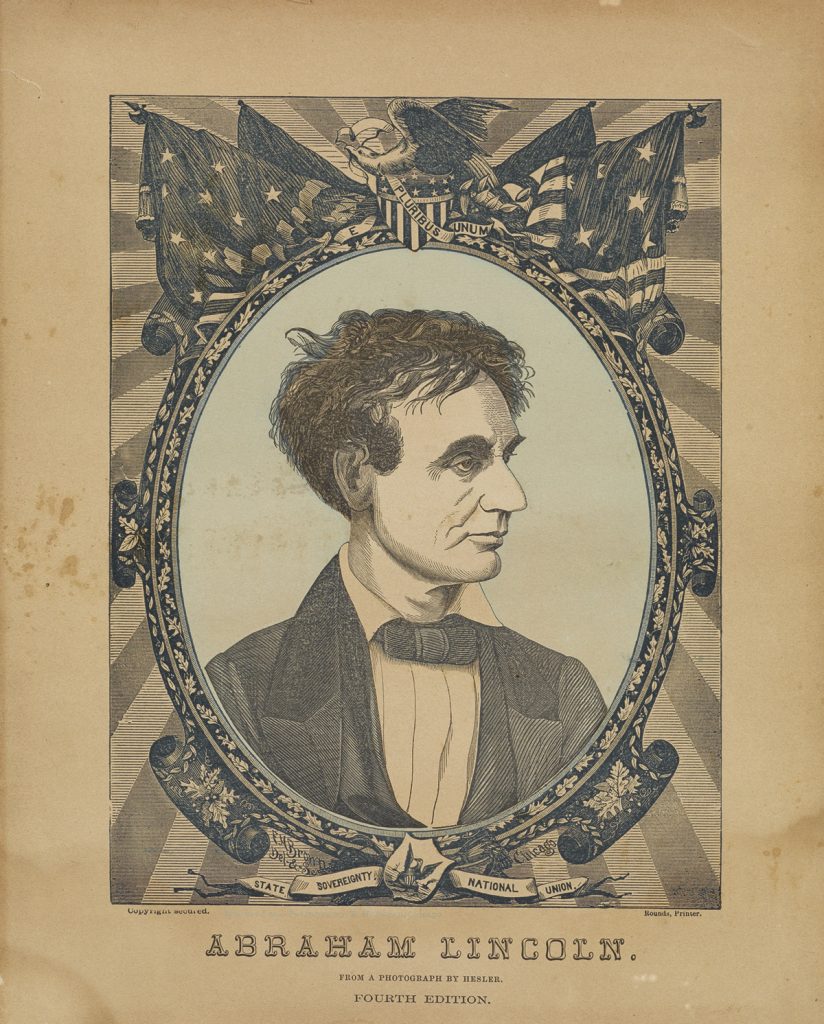
Lot 84: Franklin H. Brown, State Sovereignty, National Union: Abraham Lincoln from a Photograph by Hesler, engraving, circa 1860. Estimate $6,000 to $9,000.
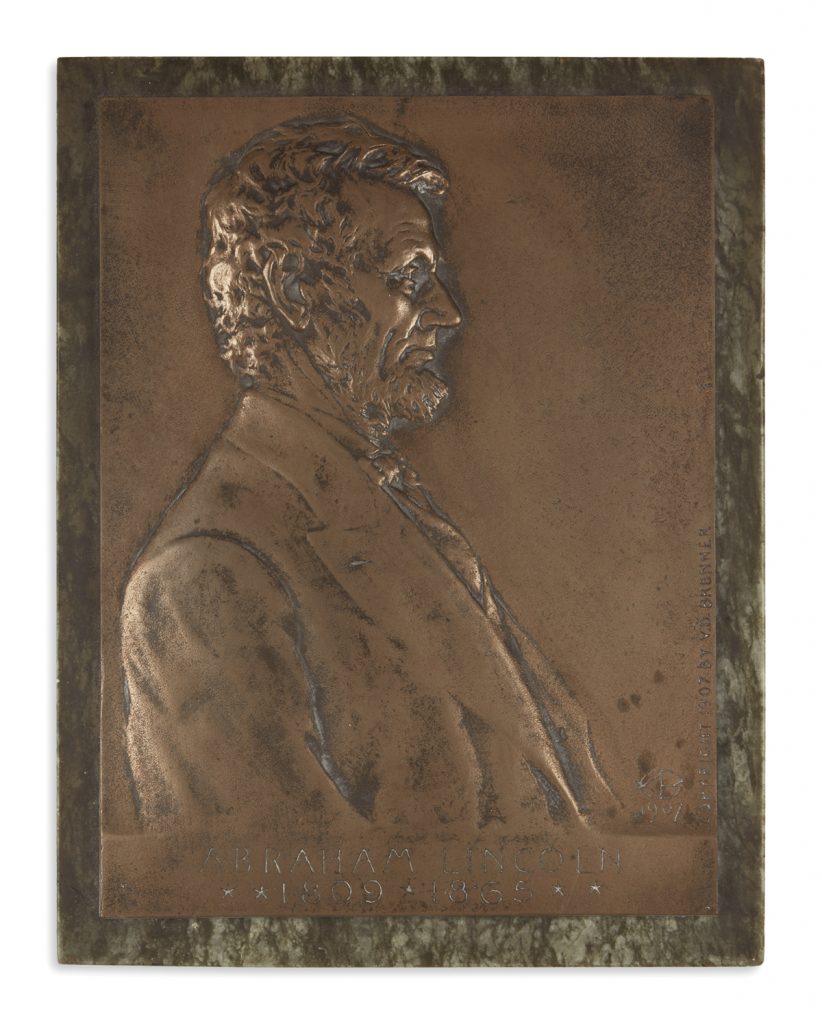
Lot 163: Victor D. Brenner, Bronze relief plaque that inspired the copper penny, 1907. Estimate $1,500 to $2,500.
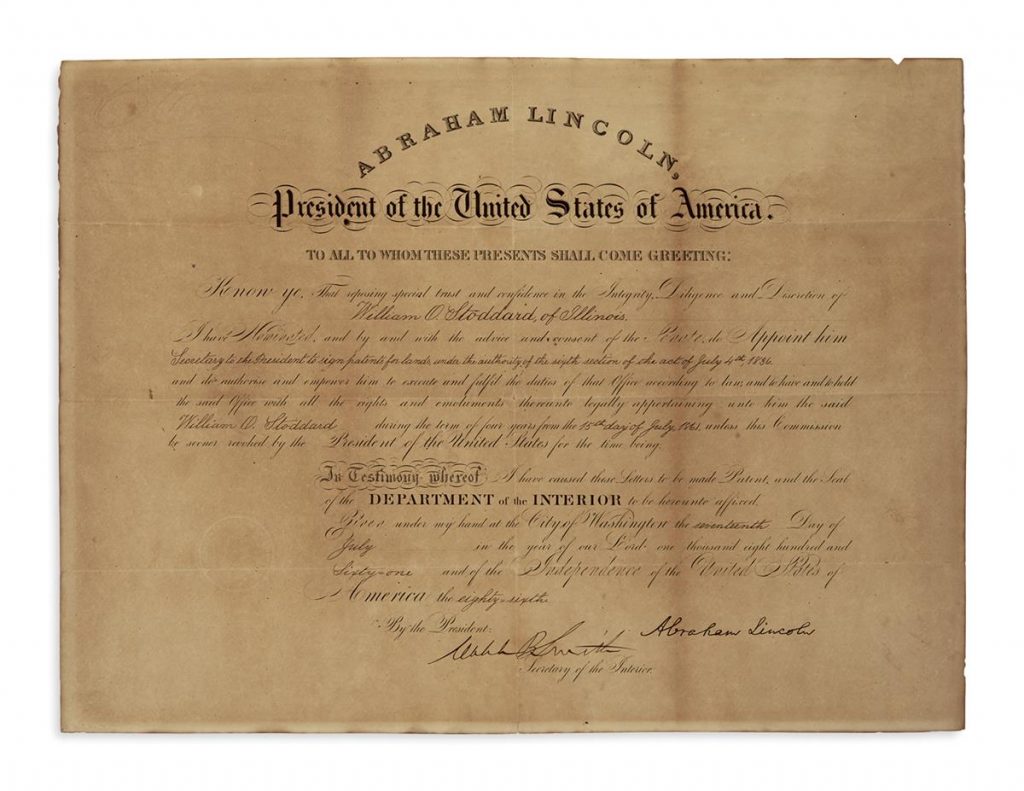
Lot 3: Commission of William O. Stoddard as secretary to the president, signed by Lincoln, Washington, 1861. Estimate $7,000 to $10,000.
Harold Holzer on Collecting Lincolniana
It is hard to remember a time when I did not collect Lincolniana, and when I was not in pursuit of materials that informed and inspired my career-long research into the Lincoln image. But I do recall purchasing a Lincoln autograph when barely out of my teens — a small envelope “franked” by then-Congressman Abraham Lincoln and addressed to the Commissioner of Pensions. That’s the acquisition that started it all.
Ultimately — that is, in 1971, at the ripe old age of 22 — I began focusing on engravings and lithographs. These very images once adorned family parlors to express reverence for the presidential candidate, president, author of the Emancipation Proclamation, and slain martyr to the Union. Originally, I wanted simply to collect evocative historical materials that could decorate our own home. In pursuit of the best examples, my wife and I combed through antique shops, fairs, and flea markets throughout the Northeast. We found superb examples everywhere.
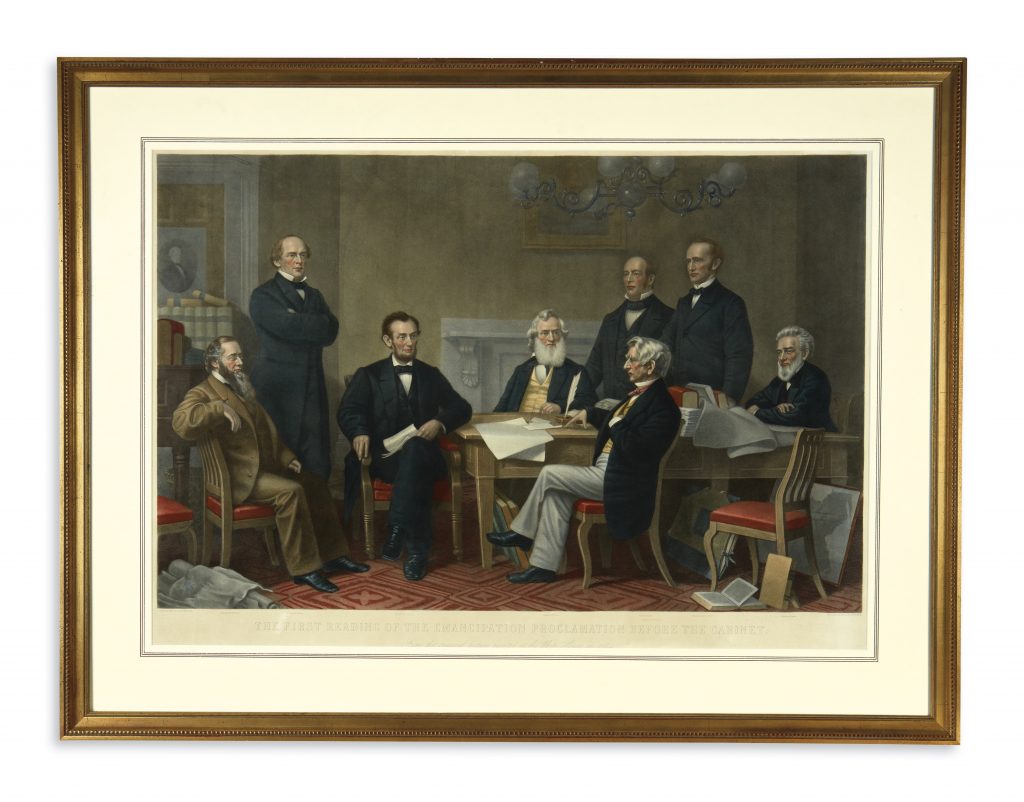
Lot 122: Alexander H. Ritchie, The First Reading of the Emancipation Proclamation before the Cabinet, lithograph, circa 1866. Estimate $400 to $600.
One of my earliest purchased (thank goodness) inspired my first scholarly inquiry into the field of Lincoln iconography. It was a lithograph of the Lincoln family by a Philadephia artist named Anton Hohenstein, housed in a beautiful gold-gesso frame. A few weeks after buying it, I was shocked to discover a photo in Life Magazine showing President Nixon “relaxing” (dressed in a suit and tie) on an easy chair in his White House study — the very same Lincoln Family print handing above his head.
Well, not quite the same. The White House version boasted a similar design, but a different face on Mr. Lincoln (based on another photo). The revelation stimulated my lifelong effort to explore the nature of nineteenth century prints: their political, commercial, and artistic origins, and their impact on period audiences. At that point, my collecting merged into historical research. The results were published in my first article, for the journal Lincoln Herald, in 1974—“Lincoln’s Print Doctor”—a study of the revisions printmakers routinely imposed to update their work, improve their hasty designs, or steal each other’s ideas. My Hohenstein, it turned out, owed a debt to photographers Wenderoth & Taylor and Alexander Gardner, not to mention a tradition of depicting presidential families that dates back to George and Martha Washington.
Many articles followed, and eventually, in 1984, the book The Lincoln Image (with my friends and coauthors Mark E. Neely, Jr. and Gabor Boritt), followed over the years by The Confederate Image, The Union Image, The Lincoln Family Album, and Mine Eyes Have Seen the Glory: The Civil War in Art. Before long the hosts who introduced me at banquets and lectures began describing me as “The Prince of Prints.” Unfortunately, my elevation soon inhibited my collecting; I found that prices began soaring, with dealers now quoting my own books to justify “print inflation.”
Nevertheless, along the way, I unearthed treasures I feel honored to have held close, including an exceptionally rare copy of the very first print of Lincoln— one of the images published to shower onto the floor of the convention hall in Chicago once he’d won the Republican presidential nomination in May 1860. I also acquired the signed document that made Illinois newspaperman William O. Stoddard a White House secretary, plus the oil painting “Stod’s” childhood friend Francis B. Carpenter made of him while the artist was in residence at the executive mansion in 1864 to work on his famous painting of Lincoln and his Cabinet. I found a rare, signed Lincoln bust by sculptor Sarah Fisher Ames, who posed the president just before the Gettysburg Address, and a long-lost life painting of then beardless presidential nominee Lincoln, executed in Springfield.
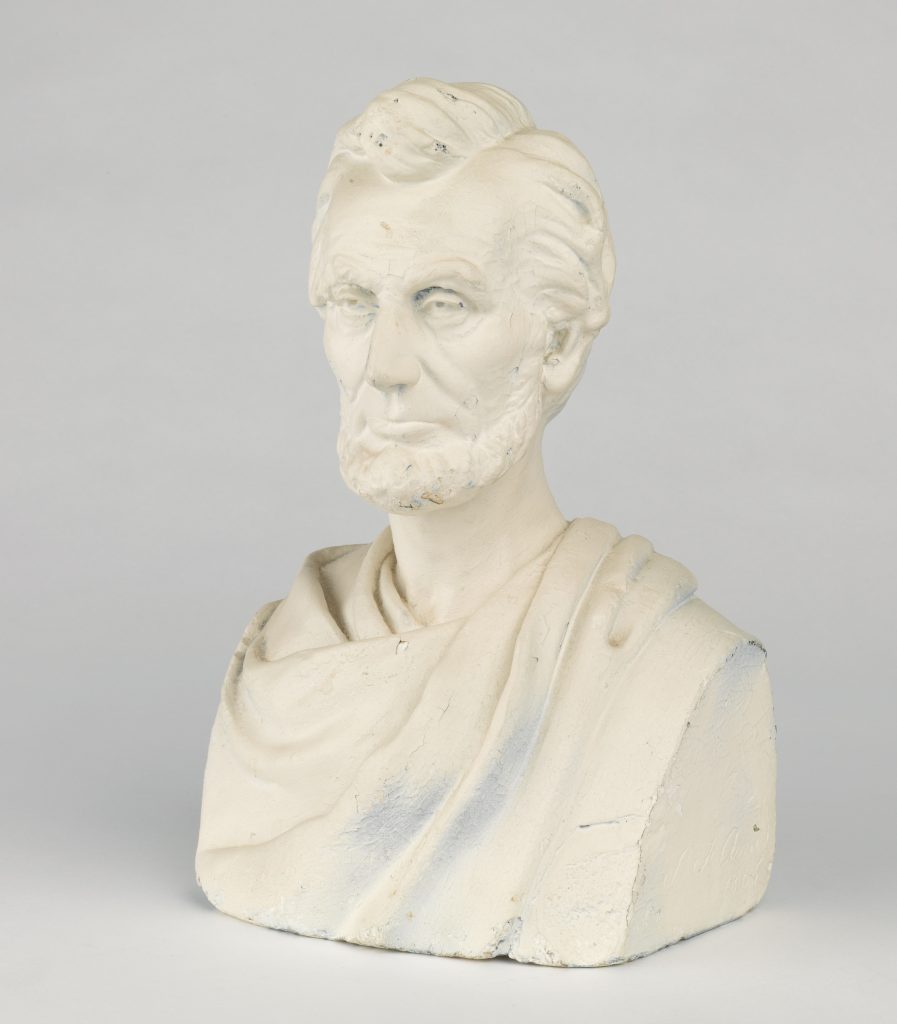
Lot 162: Sarah Fisher Ames, A bust of Lincoln based on a sitting Ames arranged shortly before the Gettysburg Address, plaster, 1865. Estimate $6,000 to $9,000.
Though I have recorded the stories behind many of these works, one mystery persists unsolved. What was there—what is there—that makes that rugged face such an enduring staple of American décor and such a powerful symbol of American possibility? Part of the appeal may be locked into his mysterious expression, half smiling, half-frowning, always seeming to gaze toward a faraway place. Perhaps our interest remains piqued, too, by Lincoln’s own endearing humility. He called himself “the homeliest man in the state of Illinois” and a “very indifferent judge” of his own portraits. Yet he sat for more painters, sculptors, and photographers than his contemporaries. And in an era long before images became instantaneous and ubiquitous, Americans kept examples in honored places in their most treasured settings, testifying to their political beliefs, patriotic loyalty, and reverence for the man who died that the nation might live.
Lincoln’s images remind us that America once boasted—and cherished— heroes. I hope this collection demonstrates one way the nation remembered the greatest American hero of them all: visually. I’m proud indeed that I began acquiring Lincoln pieces nearly half a century ago, built the collection over the decades, and supplemented the acquisitions with research and writing. Most of all, I hope the pieces we’ve treasured bring as much joy to their new owners as they have to my wife and me.
For more information or to explore Holzer’s scholarship check out his website.
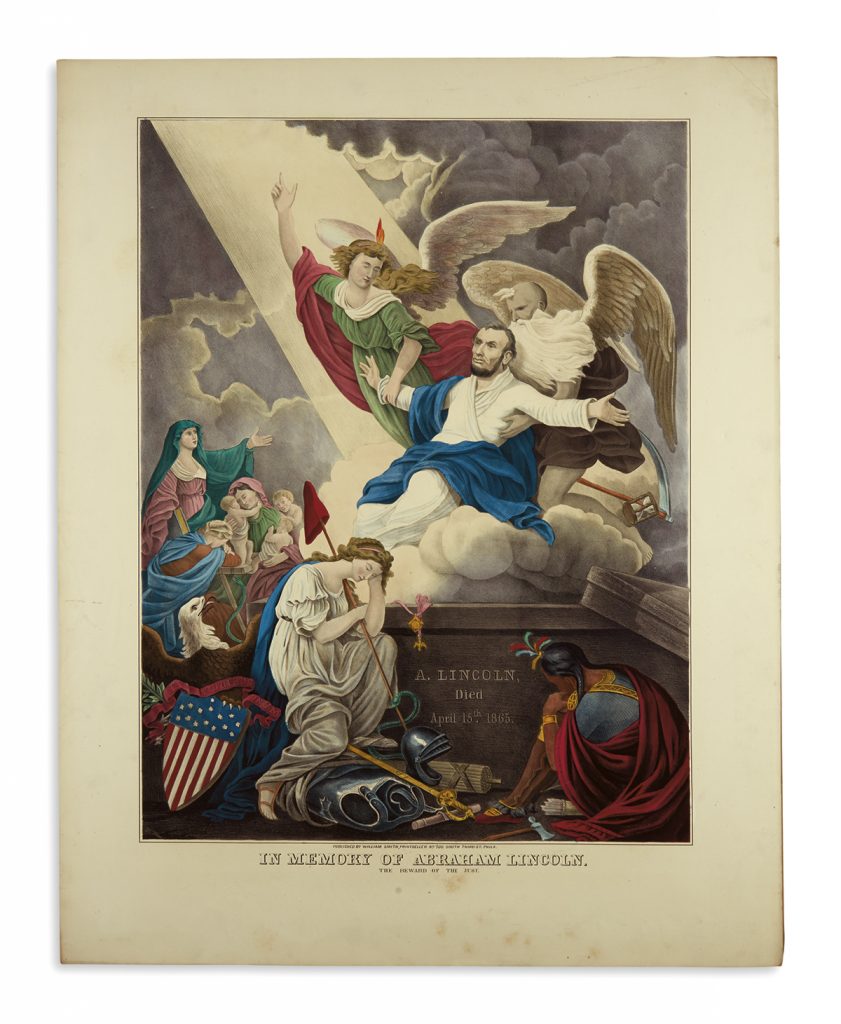
Lot 141: D.T. Wiest, In Memory of Abraham Lincoln, the Reward of Just, lithograph, circa 1865. Estimate $2,000 to $3,000.
For more on our September 27 sale, browse our catalogue.
The post The Harold Holzer Collection of Lincolniana appeared first on Swann Galleries News.